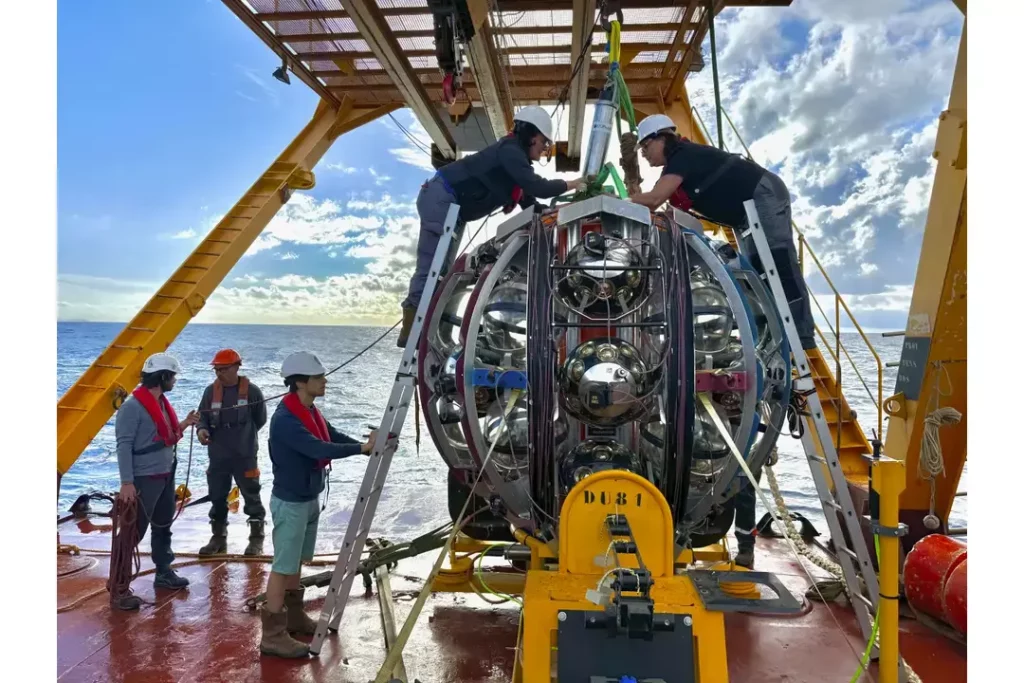
Deep-sea detector finds most energetic neutrino ever recorded
Neutrinos are some of the most mysterious and elusive particles in the universe. These ghostly, chargeless particles are created in abundance by the sun and other stars, but they interact so weakly with matter that they can travel vast distances without being detected. Scientists have long been fascinated by neutrinos, and their study has led to a greater understanding of the universe and its many mysteries.
Recently, a team of scientists used a deep-sea neutrino telescope in the Mediterranean to detect the most energetic neutrino ever recorded. The neutrino, which is 30 times more powerful than the previous record-holder, has left scientists scratching their heads, trying to figure out where it came from and what could have created it.
The telescope, known as the ANTARES (Astronomy with a Neutrino Telescope and Abyssal Residential Experiment) detector, is located about 40 kilometers off the coast of France in the Mediterranean Sea. It consists of a series of optical modules that are suspended at a depth of about 2,500 meters below the surface. These modules detect the faint flashes of light that occur when neutrinos interact with the surrounding water.
The detection of such a powerful neutrino is a significant achievement, as it will allow scientists to shed light on some of the most energetic and mysterious phenomena in the universe. Neutrinos are often produced by high-energy cosmic events, such as supernovae and black holes. The detection of a neutrino with such a high energy suggests that it may have come from one of these events, but the exact source remains unknown.
The neutrino was detected on February 20, 2023, and was recorded by the ANTARES detector as a 10-minute-long signal. The signal was analyzed by a team of scientists from the ANTARES collaboration, who used a variety of techniques to determine the neutrino’s energy, direction, and origin.
According to the results, the neutrino has an energy of about 630 trillion electronvolts (TeV), which is significantly higher than the previous record-holder, which was detected by the IceCube Neutrino Observatory at the South Pole. The IceCube detector detected a neutrino with an energy of about 220 TeV in 2013.
The detection of such a powerful neutrino has significant implications for our understanding of the universe. It suggests that there are sources of high-energy neutrinos that are not yet well understood, and that these sources may be capable of producing neutrinos with energies that are many times higher than those detected previously.
The discovery also raises questions about the origins of these neutrinos and what could have created them. Scientists believe that the neutrino may have come from beyond the Milky Way, but the exact source remains unknown.
“We are very excited about this detection,” said Dr. Antonio Marinelli, a scientist with the ANTARES collaboration. “It opens up new possibilities for understanding the universe and the sources of high-energy neutrinos. We are working hard to analyze the data and determine the origins of this neutrino.”
The detection of this neutrino is a significant achievement, and it is a testament to the power of deep-sea neutrino telescopes like ANTARES. These detectors are able to detect neutrinos that would be impossible to detect with traditional methods, and they have the potential to revolutionize our understanding of the universe.
In conclusion, the detection of the most energetic neutrino ever recorded by the ANTARES deep-sea neutrino telescope is a significant achievement that has the potential to shed light on some of the most energetic and mysterious phenomena in the universe. The discovery of this neutrino has significant implications for our understanding of the universe and the sources of high-energy neutrinos, and scientists are working hard to analyze the data and determine the origins of this neutrino.
Source:






